Ophthalmic Pathology Fellowship
About the Program
The F.C. Blodi Eye Pathology Laboratory has a long tradition at the University of Iowa. We are the only ophthalmic pathology laboratory in Iowa and are a referral center for surrounding areas. The laboratory volume is about 800 clinical specimens per year.
The fellow participates in gross and microscopic examination of all types of specimens received in the lab and in daily sign out of the cases. The fellow also assists with resident teaching and lectures. There is no formal call duty for nights and weekends for the fellow. The fellow may be responsible for frozen section call as needed.
About the Ophthalmic Pathology Fellowship
The Ophthalmic Pathology fellowship at the University of Iowa is a one-year pre- or post-residency fellowship emphasizing both clinical and research training and is based in the Department of Ophthalmology and Visual Sciences.
The clinical component provides a broad experience in the field of ophthalmic pathology. The F.C. Blodi Eye Pathology Laboratory has a long tradition at the University of Iowa. We are the only ophthalmic pathology laboratory in Iowa and are a referral center for surrounding areas. The laboratory volume is about 800 clinical specimens per year.
Clinical responsibilities in the Eye Pathology Laboratory are geared toward the fellow. There is always a first year ophthalmology resident rotating through the laboratory, however, their primary role is one devoted to learning. The fellow would be expected to participate in gross and microscopic examination of all types of specimens received in the lab and in daily sign out of the cases. The fellow will also assist with resident teaching and lectures. There is no formal call duty for nights and weekends for the fellow. The fellow may be responsible for frozen section call as needed.
Research Training
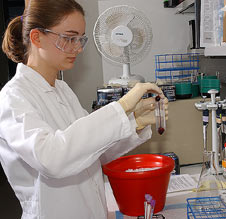 Each ophthalmology fellow is expected to complete a research project based on clinical or laboratory experience. Research is usually performed within the department, but can take place in another department or, occasionally, at another institution. The research interests of the faculty are varied, and many projects are in progress. Presentations of research are made annually during the Resident/Fellow Research Conference at the end of the academic year. The P.J. Leinfelder Award is given annually by a faculty committee to the fellow who has made the most significant contributions in preparing and delivering their research.
Each ophthalmology fellow is expected to complete a research project based on clinical or laboratory experience. Research is usually performed within the department, but can take place in another department or, occasionally, at another institution. The research interests of the faculty are varied, and many projects are in progress. Presentations of research are made annually during the Resident/Fellow Research Conference at the end of the academic year. The P.J. Leinfelder Award is given annually by a faculty committee to the fellow who has made the most significant contributions in preparing and delivering their research.
- Visit our most recent Resident/Fellow Research Day program for examples of typical areas of research interest.
- About the F.C. Blodi Eye Pathology Laboratory
- About the University of Iowa Institute for Vision Research
Rounds, Lectures, and Conferences
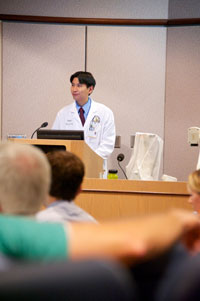 Grand rounds are held Monday through Thursday from 8:00 to 8:45 a.m. in the Braley Auditorium. All residents and staff attend unless operating or engaged in acute medical care. During rounds, residents and fellows develop their public speaking skills by making presentations. Discussion by the faculty and house staff follows each case.
Grand rounds are held Monday through Thursday from 8:00 to 8:45 a.m. in the Braley Auditorium. All residents and staff attend unless operating or engaged in acute medical care. During rounds, residents and fellows develop their public speaking skills by making presentations. Discussion by the faculty and house staff follows each case.
The cases and discussions presented by Residents and Fellows at Grand Rounds are often further developed and published as case reports and tutorials on EyeRounds.org.
Afternoons are, in general, reserved for rotation-specific conferences. Some services such as glaucoma, cornea, neuro-ophthalmology, and pediatric ophthalmology have "chart rounds". These conferences focus on interesting patients that presented that day. Discussions center on patient care but also cover other areas such as communication, ethics, and systems based care. Other services such as retina have formal conferences, such as Fluorescein conference on Monday afternoons, and Dr. Ed Stone's molecular ophthalmology rounds on Tuesday nights.
Once a week during the academic year, didactic lectures on ophthalmology are presented. These two-hour lectures are organized to coincide with the American Academy of Ophthalmology’s Basic and Clinical Sciences Course. Lectures cover most aspects of basic and clinical ophthalmology. Once every 10 weeks these sessions include a journal club covering recent journal articles in that subject area to help develop skills in practice based learning.
Six, day-long clinical conferences are held during the academic year. Clinics are closed on these days. Ophthalmologists from throughout Iowa and Illinois attend and present challenging clinical problems for discussion by faculty and guests. These meetings feature a visiting professor who presents a lecture based on his/ her research interests. The day is balanced by the presentation of a more clinically oriented topic. This conference has contributed to the excellent rapport between practicing ophthalmologists and the ophthalmology staff at the university.
Each year in June, alumni and other members attend a two- to three-day Iowa Eye Association meeting with invited speakers and a focus on a specific subspecialty topic.
Presentations of research are made annually during the Resident/Fellow Research Conference at the end of the academic year.
Research
Historically, research training in eye pathology has been mostly of a clinical nature. The fellow is expected to undertake and complete a research project during the year to be presented at the annual Residents' and Fellows' Day in the Spring. Additionally, there is the opportunity to assist with ongoing research projects.
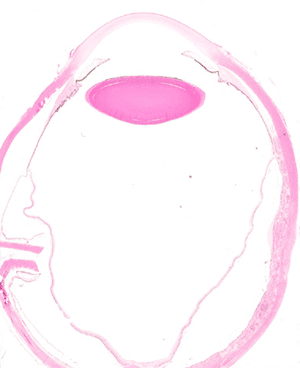
Read about the case from which these images are derived at Tantri A, Syed AN, Weingeist TA. Metastatic Choroidal Lesion: 61 y.o. man presents with pain and blurry vision OD. EyeRounds.org. March 9, 2005; Available http://eyerounds.org/cases/35-metastaticlungCA.htm.
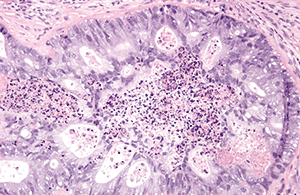
Teaching and Education
The Department of Ophthalmology at the University of Iowa has a unique, superlative teaching program. Morning rounds are held Monday through Thursday during the week from 8:00 to 8:45 a.m. These are attended by all faculty, fellows, and residents and consist of patient presentations, seminars, and interesting discussions. There are also afternoon conferences in pathology, neuro-ophthalmology, and retina on a weekly basis. Every Friday morning during the academic year faculty members present a two-hour lecture covering sections of the Basic and Clinical Sciences course subject material.
FAQs
Where is Iowa City?
Iowa City is 220 miles directly west of Chicago on Interstate 80. It's also within a 4 to 5 hour drive to Milwaukee, Madison, Minneapolis, Omaha, Kansas City and St. Louis. It has the cultural, educational, social and political opportunities of a bigger city with the values and ambiance of a midwestern town. It's clean, safe, nothing is farther than a 15 minute car ride, it has a great city bus system (with bike racks!), wonderful parks, bike and hiking trails, sports, schools and even sailing. Those who have lived here and left, frequently return because what they were looking for was in their own back yard. The metropolitan statistical area population is somewhere in the neighborhood of 160,000 people with about 73,000 of those within the Iowa City city limits. (2013 census data).
What's the weather like in Iowa City?
For about two weeks every winter it's very cold and windy and for two weeks every summer it's really hot and humid. The rest of the time it's pretty nice. We consider our weather character building.
- The average warmest month is July and the coolest month is January.
- The average temperature in the summer is 72.6 and in the winter, 23.7.
- Average number of sunny days is 166.
- The highest recorded temperature was 104°F in 1988.
- The lowest recorded temperature was -26°F in 1996.
- The maximum average precipitation occurs in August, average annual rainfall is 35".
- Average snowfall is 28" (with an average of 16 days of measurable snowfall per winter).
What is there to do in Iowa City when you're not working?
There are 15 different festivals and art fairs, plus concerts and race events. There are many music venues, sports events and neighborhood street fairs and garden walks. We also have a really big mall and several smaller ones, 50 parks, 9 golf courses, 6 public tennis courts, 6 public pools, some lakes and a reservoir with trails, camping & boating. There are hiking and bike trails, some famous bookstores, a ton of galleries and excellent museums. There are half a dozen or more performing arts venues. There's always something going on.
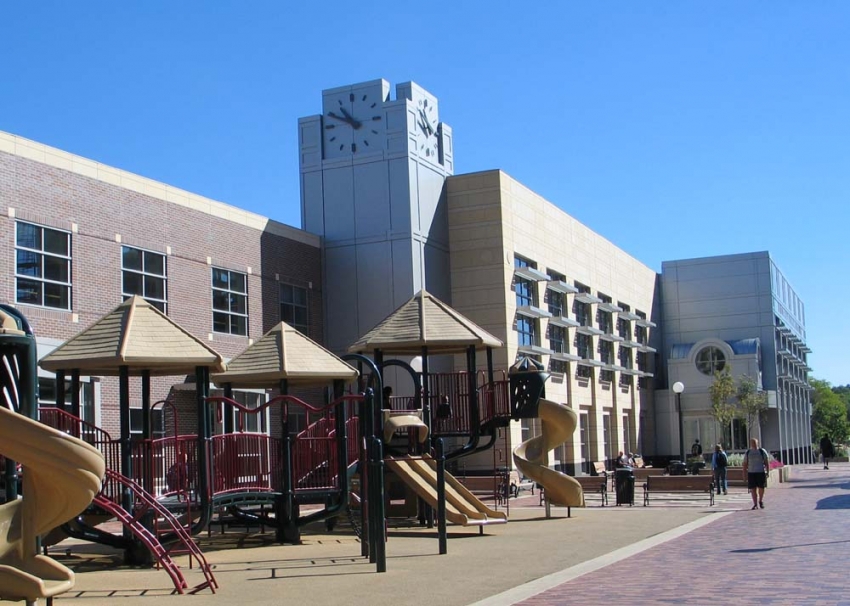 What's Iowa City like for kids and families?
What's Iowa City like for kids and families?
There's ice skating, bowling, organized sports, public parks, miniature golf, a great public library, a toy library, fun centers, swimming pools and 3 beaches, 9 museums including a children's museum, dance companies and public recreation centers that feature many activities for kids and families at little or no cost. We also have 20 movie screens and 50-licensed daycare providers. The Iowa City schools are perennially ranked among the top schools in the nation. Iowa City is unique in the facilities and services available for individuals with disabilities. Many families who have a family member with a disability are reluctant to leave Iowa City because they cannot duplicate those services in another location.
Are there any job opportunities for my spouse/significant other?
Yes, in April 2016, Iowa City had an average of 2.3% unemployment (compared to 5.5% nationwide). Also check out The University of Iowa's Dual Career Network.
How ethnically diverse are the patients?
Like a lot of university towns, we have a large international community. Growing cultural diversity is another reason Iowa City is an interesting place to live. Diversity is embraced and celebrated with city and university events, festivals, clubs and programs. The University works hard to recruit and retain minorities with its affirmative action policies. About 15% of Iowa Citians are non-white, this percentage is paralleled in our clinics.
What are the fellowship opportunities available?
Ten to 12 fellows train in our accredited fellowship programs each year. We have fellowships in all of our sub-specialty areas. Most are one-year fellowships but 2-year fellowship opportunities are available as well.
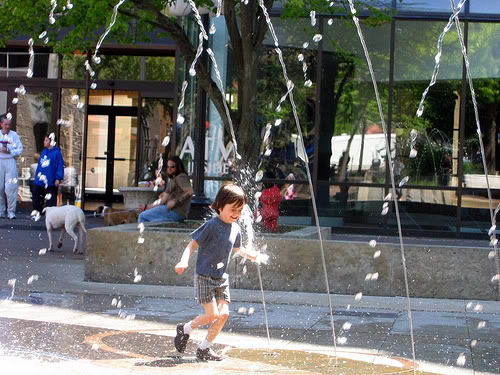 Is this a family friendly program?
Is this a family friendly program?
We love children and support residents and fellows in their efforts to balance work with family life. We have several dual physician families and understand the stresses. Women receive up to 6 weeks of paid maternity leave after delivery. Men get 5 working days off for paternity leave. There are several childcare facilities near the hospital and one on-site. The training program also has activities during the year where all family members are invited.
Is there sufficient patient volume so that I can have multiple exposures to a variety of eye diseases and conditions?
Our patients represent all age groups and all socioeconomic strata and they present with virtually all acute and chronic conditions of the eye.
The UIHC is a tertiary care center and our department receives referrals for specialized services from Iowa and neighboring states. Some patients travel from outside the continent to be seen by our physicians.
In an average year, patient visits per sub-specialty are approximately:
- Cornea: 7,000
- Comprehensive Ophthalmology: 13,000
- Glaucoma: 6,000
- Neuro-Ophthalmology: 3,000
- Oculoplastic Surgery: 4,700
- Contact Lens: 4,500
- Pediatric Ophthalmology: 8,000
- Retina/Vitreous: 16,000
- Vision Rehabilitation: 2,800
- Other: 500
Is there a research requirement for graduation?
Participation in research is an integral part of the training experience. Projects may be done in collaboration with a faculty preceptor who will be involved in all phases of the project. Each fellow presents the results of his/her research at the department's resident and fellow research day.
What's so good about Iowa?
- Our faculty are really nice, and exceptionally dedicated teachers too.
- We have a diverse faculty with wide-ranging clinical and research interests.
- Some of our faculty are internationally known and have been with us for many years.
- We also have several bright young faculty who bring new interests and enthusiasm to the practice.
- All the subspecialties are represented in our training program.
- Our programs, clinical and teaching are consistently ranked in the top ten nationally.
- Our residents are great people and they make exceptional ophthalmologists.
- Iowa City is a highly intellectual community with premier arts events that are accessible to residents both in terms of cost and location.
- We have an outstanding school system for children in grades K-12.
- A great training program and a high quality of life.
- We want you to succeed.
Quick Facts
Benefits
- Competitive Stipends
- Comprehensive medical, dental, hospitalization and pharmacy benefits for residents/fellows and their dependents
- Vacation each year: 3 weeks, for specific information Paid Time Off and Leave Information
Board Certification Requirements
- While Ophthalmology, as a specialty, is board certified, Ophthalmology subspecialty fellowships are not board certified. Visit the American Board of Ophthalmology for specifics on board certification requirements.
How to Apply
To apply for the ophthalmic pathology fellowship please contact the Ophthalmology Fellowship Match.
All applicants must register and apply through the SF Match Central Application Service (CAS).
We do accept applications from foreign medical graduates but you must have passed Steps I and II of USMLE and have your ECFMG certificate.
Criteria
The University of Iowa endeavors to attract the highest caliber and most suitable applicants to become ophthalmology fellows. Each program places a high emphasis on providing sub-specialty training for clinical ophthalmology and research. Letters of recommendation, performance on OKAP and other national examinations, extracurricular activities and the applicant's personal statement are criteria that are considered prior to offering applicants an interview.
Our People
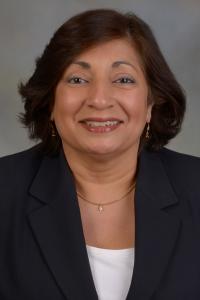
Nasreen A. Syed, MD, an ophthalmologist with specialty training in ophthalmic pathology, currently heads the laboratory.
Ophthalmology Fellowship Director
Alina Dumitrescu, MD, FACS
University of Iowa Health Care
Ophthalmology and Visual Sciences
200 Hawkins Drive
Iowa City, IA 52242-1091
Email: alina-dumitrescu@uiowa.edu
Ophthalmology Fellowship Coordinator
Vikki Bell
University of Iowa Health Care
Ophthalmology and Visual Sciences
200 Hawkins Drive
Iowa City, IA 52242-1091
Email: vikki-bell@uiowa.edu
Phone: 319-356-0382
Our Fellows
Former Eye Pathology Fellows
A. L. Aurora, MD, PhD—Ocular Pathology (-1970)
Laila Basta, MD, San Francisco—Echography (1971-1972)
Allan J. Bogdan, MD, State College, Pa.—Ocular Pathology (2004-2005)
Thomas C. Cannon, MD, Little Rock, Ark.—Ocular Pathology (1997-1998)
Ghassan Y. Dagher, MD, Montgomery, W.Va.—Ocular Pathology (1978-1979)
Juan P. Fernandez de Castro, MD, Prospect, Ky.—Ocular Pathology (2008-2009)
Maria A. Foley, MD, Iowa City, Iowa—Ocular Pathology (2016-2017)
Mahendra P. Garg, MD, Lusaka, Zambia—Ocular Pathology (1969-1969)
Stacey E. Gorovoy, MD, Fort Myers, Fla.—Ocular Pathology (2007-2008)
Luke Qi Jiang, MD—Ocular Pathology (1981-1982)
Shalini Johnson, MD, Houghton, Mich.—Ocular Pathology (2006-2007)
Jerry L. Kobrin, MD, Fort Meyers, Fla.—Ocular Pathology (1977-1978)
Karel Maertens, MD—Ocular Pathology (-1969)
Amanda C. Maltry, MD, Minneapolis—Ocular Pathology (2013-2014)
Stephen J. Massicotte, MD, Indianapolis—Ocular Pathology (1989-1991)
Mary G. Mehaffey, MD, Glen Ellyn, Ill.—Ocular Pathology (1995-1997)
Jacob Pe'er, MD, Jerusalem—Ocular Pathology (1991-1995)
Yasmyne C. Ronquillo, MD, Santa Ana, Manila, Philippines — Ocular Pathology (1988-1989)
Paul-Emile Roy, MD, Quebec City—Ocular Pathology (-1967)
Volker Rummelt, MD, Erlangen, Germany—Ocular Pathology (1992-1993)
Beata I. Rymgayllo-Jankowska, MD, Lublin, Poland—Ocular Pathology (1998-1999)
Aron Samspon, MD, Park Ridge, Ill.—Ocular Pathology (2018-2019)
Meagan Brown Seay, MD, Lakewood, Ohio—Ocular Pathology (2012-2013)
Aron D. Sampson, MD, Park Ridge, Ill.—Ocular Pathology (2018-2019)
H. John Shammas, MD, Lynwood, Calif.—Ocular Pathology (1975-1977)
Chaunhi T. Van, MD, Worcester, Mass.—Ocular Pathology (2015-2016)
Rita Parys-VanGinderdeuren, MD, Leuven, Belgium—Ocular Pathology (1991-1992)